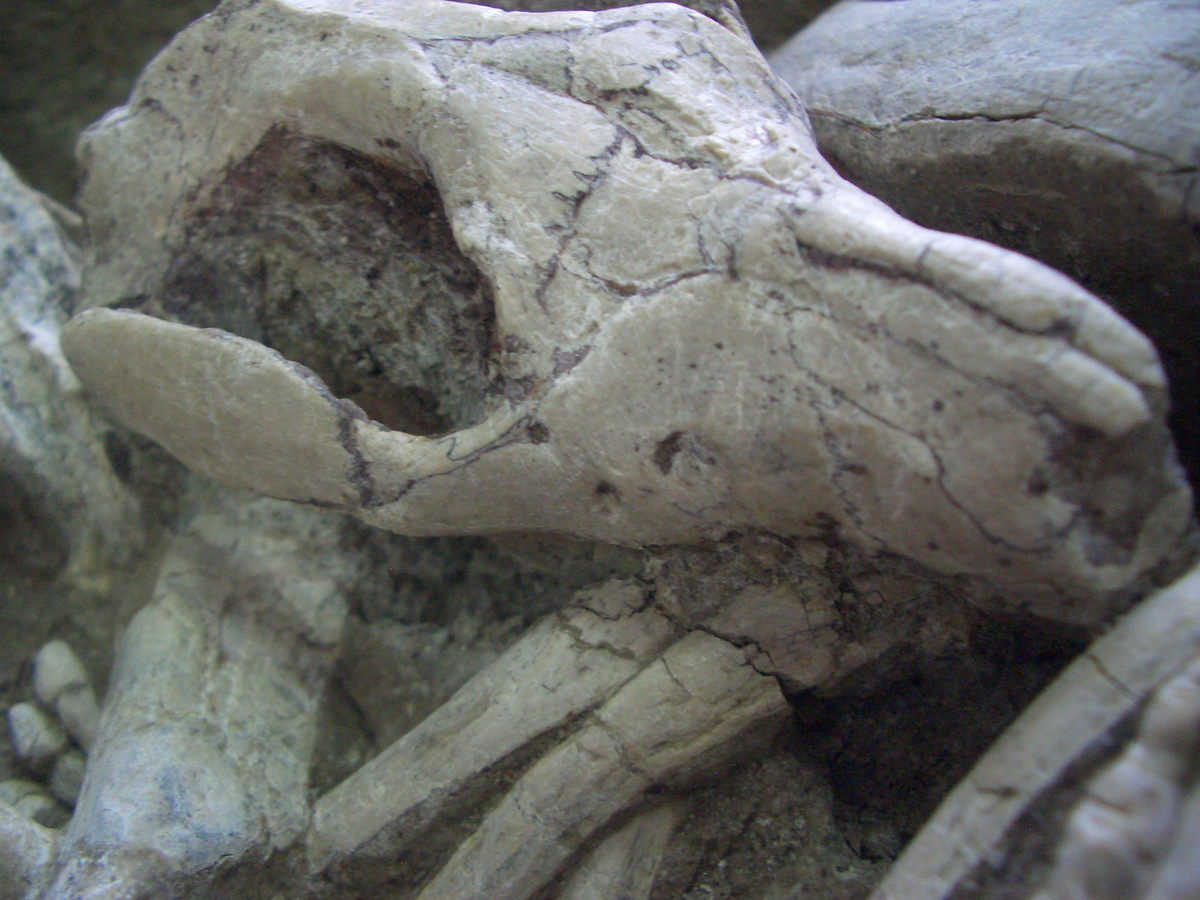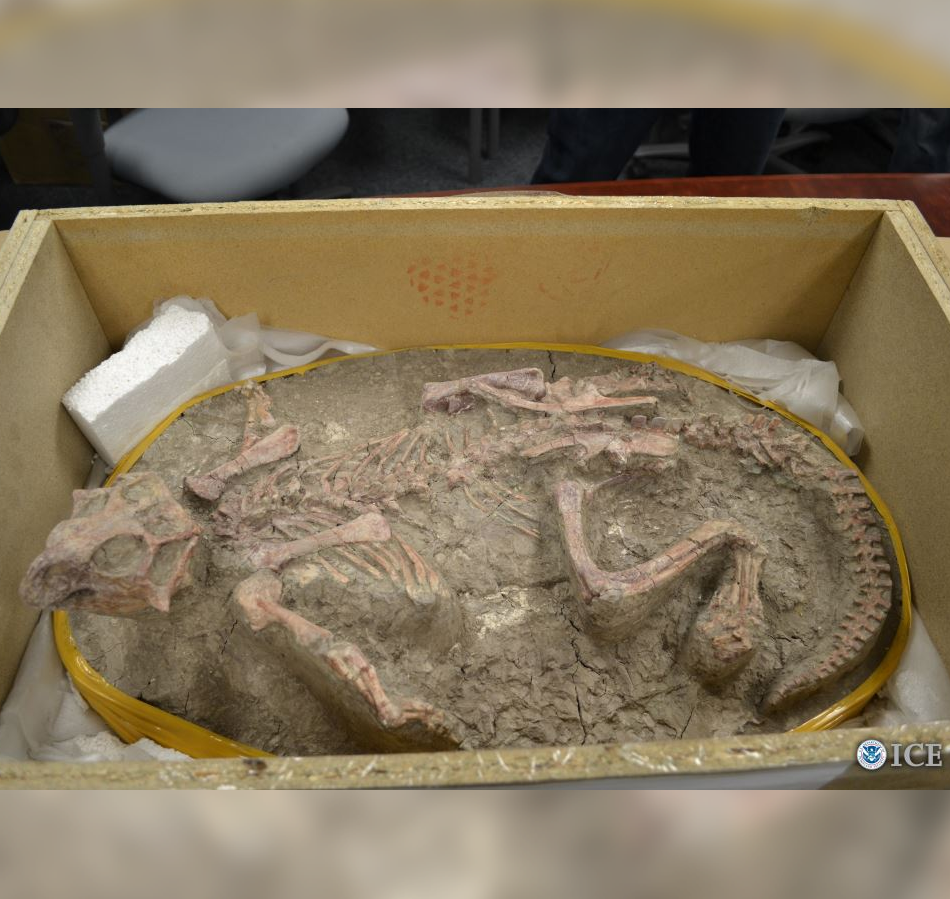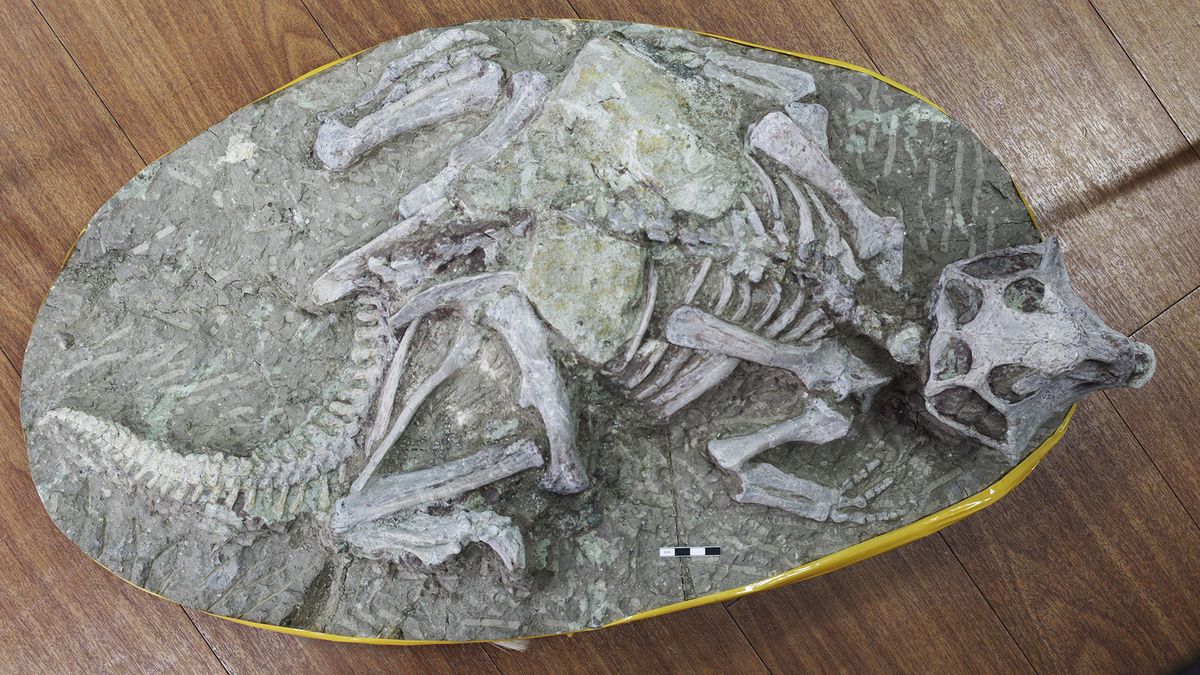A new fossil shows a prehistoric badger-like mammal and a dinosaur locked in ‘mortal combat’
An ancient, badger-like animal had no fear taking down a larger dinosaur.
A new paper in Scientific Reports describes a fossil of the cat-sized mammal, Repenomamus robustus, locked in “mortal combat” with a Psittacosaurus that was three times as large. The Repenomamus was between 6 and 8 pounds and appears to be biting into the dinosaur.
“The thinking has always been that it was the dinosaurs that ate the mammals and not vice versa,” Jordan Mallon, a palaeobiologist at the Canadian Museum of Nature and one of the authors of the study, told Insider. “But what’s interesting about this find is it shows that mammals were capable of attacking and eating dinosaurs too, which is pretty exciting.”

Mammal vs. dinosaur
The 125-million-year-old fossil is from the Early Cretaceous period and was found in the Liujitun fossil beds in China’s Liaoning Province. Earlier, in 2005, researchers found a fossil from the same region of a Repenomamus with the broken-up bones of a juvenile Psittacosaurus in its gut contents. So, clearly, these mammals enjoyed dining on dinosaurs.
But it wasn’t known if the Repenomamus was merely scavenging remains or feasting on baby dinosaurs. The newer fossil has quite a bit of evidence suggesting that the mammal was attacking the dinosaur.
The Repenomamus is gripping the Psittacosaur’s jaw and hind leg while biting the dinosaur’s rib. The mammal is also perched on top of the dinosaur, as though it’s trying to subdue it, Mallon said.

“I think the clincher is just the fact that the hind leg of the mammal is trapped within the folded hind leg of the dinosaur,” Mallon said. That would be less likely to happen if the Psittacosaur were already dead.
In modern scavenged prey, the consumer usually leaves a good deal of bite marks behind as it tries to tear off decaying flesh, Mallon said. There aren’t bite marks on the dinosaur, as the researchers would’ve expected from a partially eaten carcass.

Pack hunter or lone wolverine?
“The question that comes up is, what is a mammal doing attacking a dinosaur that’s so much larger than itself?” Mallon said.
The researchers looked at modern animals for similar behavior of smaller animals preying on larger ones. It’s possible these Cretaceous mammals were pack hunters, like wolves.
There are lone hunters capable of taking down larger prey, like wolverines attacking caribou. Since that size disparity is even greater, Mallon said, “we do think it’s reasonable to suspect that this mammal was attacking this dinosaur.”

But the mammal didn’t get to enjoy its meal. Nearby volcanic activity rained ash on the area, which had a temperate climate, including dry and wet spells. During a wet season, floodwater may have mixed with volcanic ash, creating a slippery mixture.

“This has a tendency to create sometimes disastrous mudflows,” said Mallon, that could have buried the two animals mid-fight.
